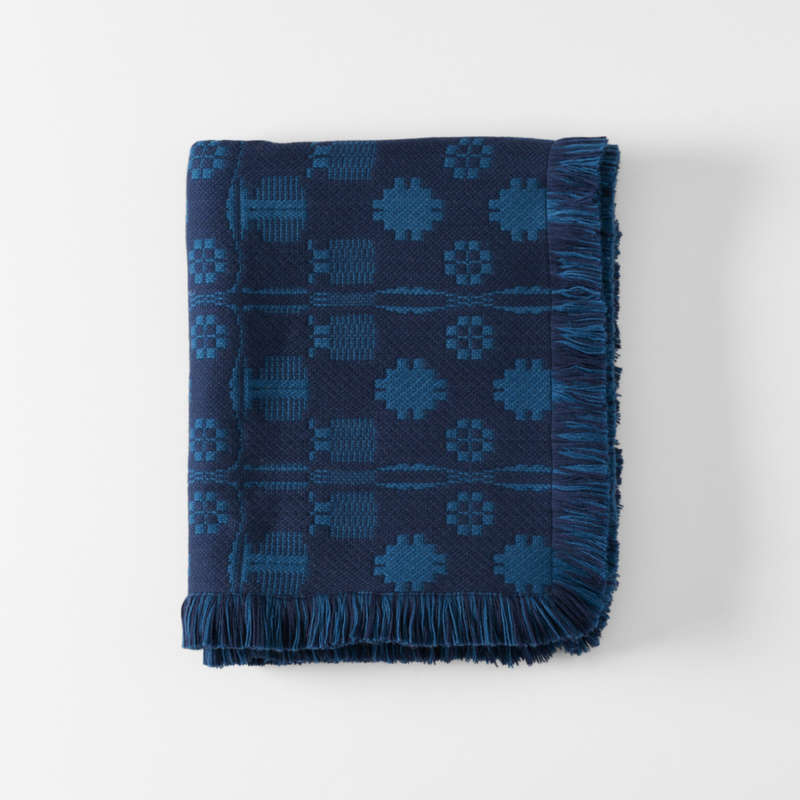There’s nothing like a freshly made bed, with clean sheets and luxurious pillows—particularly during hibernating season. But is your bed (where you sleep, relax, read, watch Netflix and, quite possibly, eat and work) really clean? It’s a question we almost couldn’t bear to ask.
“It pays to go deeper,” says bedding maven Tricia Rose of Rough Linen, when we did ask her how to maintain a truly clean bed. Some of her tips called us to attention; others let us off the hook (good news: you don’t need to wash your duvet cover as often as you might think). Here are Tricia’s pointers, and a few myths dispelled.

1. You might be washing your sheets too often.
If you’re washing your sheets every week, it turns out you can cut yourself a little slack. “Sheets, pillow slips, and duvet covers are right next to your body, so wash them regularly,” advises Tricia: “Sheets and pillow slips at least every two weeks, duvet covers and shams as needed, maybe every four weeks. You thought I’d say every week? Certainly, you can do every week if you feel that’s best, but I tend to let them go longer if they are not right next to your skin.”
2. The golden rule of laundry? Do no harm.
To clean sheets, says Tricia: “Use a small amount of a modern eco-detergent and select cold wash for linen. Spot clean with Shout or soak with Biz if you need to. The first rule of stain removal is Do No Harm, so follow the directions on the package.”

3. Remember to use protection.
“Your next line of defense is pillow protectors and a mattress cover,” says Tricia. “These protect your investment and can be machine washed as often as you see fit, a couple of times a year at a minimum. If in doubt, wash them.”
4. Ditch the laundry accoutrements.
“There is no need to use dryer sheets or fabric softeners,” says Tricia. “They can be toxic: they coat the fibers of your fabrics to make them less absorbent, and they give you problems with your dryer filters too. Natural is better.”

5. You should be vacuuming your mattress.
“Mattresses benefit from being vacuumed, and if you have a cleaner with a transparent receptacle you will be horrified at the amount of dust that comes up,” says Tricia. “Yuck factor: that scurf is composed of dust mites, skin particles, and lint. Suddenly lint doesn’t seem that bad a problem.”
(Spot clean and deodorize your mattress, while you’re at it: read how in Domestic Science: How to Clean a Mattress.)
6. When washing pillows and duvets, proceed with caution.
“When it comes to down and feather items like pillows and duvets, I’m reluctant to wash them at home because of the risk of mould if they don’t dry quickly,” says Tricia. “If there’s been a horrible accident, wash and dry them in the large machines at a launderette, or chicken out completely and have them washed professionally. Use dryer balls to fluff them up much faster.
“Synthetic pillows and duvet infills are another case entirely, they can become unpleasantly stiff and dense if they are washed. If it becomes a necessity, very low heat is best. More exotic infills like wool and silk should probably be dry-cleaned; see what the manufacturer recommends.”
(N.B.: If you must wash your pillows and duvet, our resident Domestic Science expert, Justine, has a few rules for success: see Domestic Science: How to Wash a Pillow and Domestic Science: How to Wash a Down Comforter.)

7. It’s okay to embrace imperfection.
Here’s where Tricia says you can loosen the pressure to have a completely spotless bed: stains. “If you have exhausted the best modern solutions like Biz and Shout, it is unlikely that old-fashioned remedies will work any better. Then you need to decide: Can you live with it? If it is on an under-layer, the choice is easier. If it is visible, it is up to you to decide if it is an honorable scar. Speaking as someone who uses a fountain pen and sometimes writes in bed, I can live with the odd spot, as long as I have a fresh-smelling bed.”
8. Your bedroom should not feel stuffy.
Advises Tricia: “Use your nose. Close your eyes and remember the smell of a teenager’s bedroom in summer. Shut all your windows and doors for a day, and if the bedroom feels close and stuffy or even slightly ‘teenage-y’ when you re-enter, a spring clean is in order, even if it is midwinter. There is nothing quite as delicious as the consciousness of a crisp fresh bed.”

9. You can boost freshness with essential oils.
To keep your clean bed smelling that way: “Essential oils and natural scents are an easy freshness option. Lavender is so traditional it gives us the root for the word laundry,” notes Tricia. “But you can play with other scents. Galium verum (lady’s bedstraw) is another traditional scent, as are some of the artemisias. Cedar, pine, lemon, rose geranium. Go to town, but be careful of anything too strong or too sweet.” Here’s how to make a DIY linen freshener.
10. Air and sunlight are sometimes all you need.
“The best quick fix? Fresh air. Strip the bed, fling open the windows, shake out duvet infills and pillows, and hang them outside in the sun.”

Head to our archive of Domestic Science posts to read more about keeping your bed (and beyond) fresh, clean, and in order; plus: Expert Advice: How to Fold a Fitted Sheet, Step by Step, Expert Advice: Proper Bed-Making 101, How to Make Square Corners, Step by Step, and Linen Logic: 20 Tips for Taking Care of Your Bedding.
And, for more household myths, dispelled, check out our 10 Things Nobody Tells You Series:
- 10 Things Nobody Tells You About Zellige, the Trendiest Tile of 2019
- 10 Things Nobody Tells You About Renovating Your Bathroom
- 10 Things Nobody Tells You About the Benefits of Wool
- 10 Things Nobody Tells You About Clawfoot Bathtubs
- 10 Things Nobody Tells You About Painting Kitchen Cabinets
- 10 Things Nobody Tells You About Shiplap
- 10 Things Nobody Tells You About Marble Countertops
- 10 Things Nobody Tells You About Painting a Room White




Have a Question or Comment About This Post?
Join the conversation (7)